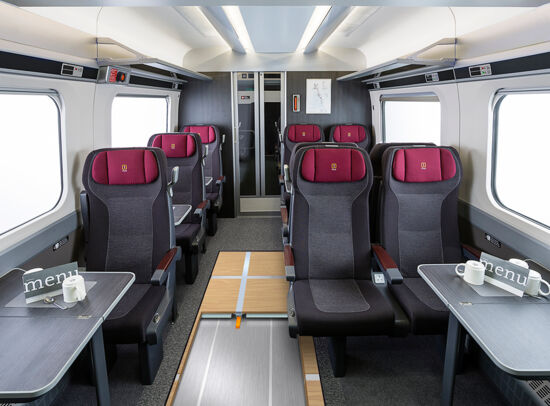Floating floors for rolling stock in Hitachi high speed trains
Reduced vibrations and noise inside carriages
The British Department of Transport is investing in new high-speed trains as part of its ‘InterCity Express Programme (IEP)’ railway investment plan. A high level of travelling comfort was a priority here. Elastic floating floors for rolling stock from Getzner provided the solution.
The challenge
- Uneven running surfaces, corrugated rails and drive motors put stress on carriage components and generate noise
- Reduce vibrations and noise inside carriages
- Protect interior fittings, construction and electronic components against vibrations
Sylomer FR
The Getzner solution
The elastic bearings in the rolling stock floors of the new Hitachi Class 800 trains are made from Sylomer® FR, a fire-retardant material that has a Hazard Level (HL) 3 rating for floor constructions (R10). The flooring system meets the requirements for a higher level of travelling comfort and in terms of safety.


How you benefit from our solution for floor bearings in carriages
- Significantly reduced vibrations and noise inside carriages
- This provides increased comfort for passengers
- Reduced wear of the carriage structure, therefore lower maintenance costs
- Minimal deflections over the entire service life
- Material is easy to work with
- Tolerance compensation during installation


We won the contract due to the exceptional performance of our materials, our extensive experience in equipping rolling stock and because our solution was the most cost-effective.
Up to date with the latest case studies
Together with our customers, we passionately pursue new benchmarks in the field of vibration isolation and vibration protection. We regularly publish new case studies to share exciting insights into our projects. Our LinkedIn channel provides you with all the latest news from Getzner, directly to your feed.
Contacts


